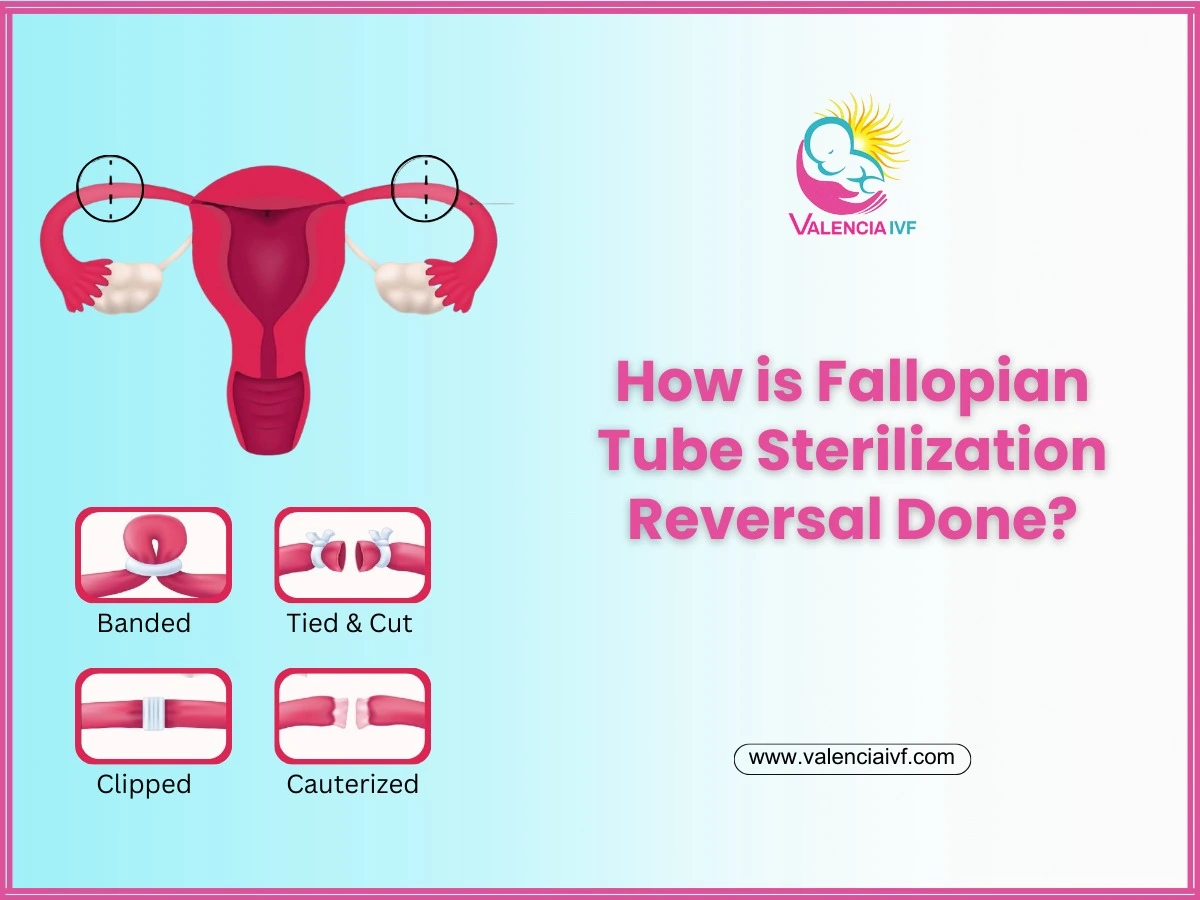
How is Fallopian Tube Sterilization Reversal Done?
Fallopian tube sterilization is also known as tubal ligation, it is a process performed on women who are not willing to get any more pregnancies.
In this procedure, fallopian tubes, which are responsible for caring for the eggs and where the sperm meet the eggs and fertilization takes place, are cut, tied, or sealed off to prevent fertilization.
In simple terms, after tubal ligation women cannot get pregnant!
Understanding Sterilization Techniques
- Overview Tubal Ligation
Tubal ligation, also known as “tying your tubes”, is a permanent form of birth control for women. During this process, the fallopian tubes, which carry eggs from the ovaries to the uterus, are cut, tied, blocked, or burned to prevent the eggs from meeting the sperm, thus preventing pregnancy. This procedure is typically chosen by women who are certain that they do not wish to have any more children.
- Mechanism of Tubal Occlucion
The primary goal of tubal ligation is to create a barrier that prevents sperm from meeting the egg which stops further fertilization. This is achieved by physically blocking the fallopian tubes or inducing scar tissue formation to close off the tubes.
Factors Influencing Reversal Decisions
- Personal and Medical Considerations.
- Age overall health, fertility goals, and previous reproductive history are some of the factors on which fallopian tube sterilization reversal depends. Individuals looking for reversal should consult with a skilled IVF specialist from the best IVF center in Lucknow.
- Psychological Impacts of Sterilization
Sterilization can have psychological effects on individuals, including feelings of regret, loss, etc. Individuals might feel a sense of regret or might want to re-experience parenthood again in their lives due to instant mind change. These are some of the factors where decisions regarding reversal are taken by the individuals.
Surgical Approaches to Reversal
- Microsurgical Approach: During the Tubal Ligation Reversal, the surgeon uses a surgical microscope and specialized tools to perform a delicate and precise procedure. These tools assist the surgeon in performing the surgery smoothly. With the help of very fine sutures, the surgeon can reconnect the fallopian tube and restore its function.
- Laparoscopic Approach: This approach involves making a small incision in the abdomen through which a thin, flexible tube with a camera (laparoscope) and surgical instruments are inserted.
While performing tubal ligation reversal by laparoscopy approach, the surgeon visualizes the abdominal cavity and performs the procedure by monitoring the images from the camera on a screen.
This approach is used more in comparison to open surgery because it includes smaller incisions, less scarring, and faster recovery.
Anesthesia and Preoperative Preparation
- Types of Anesthesia Used
Anesthesia refers to those medication techniques used to block pain and sensation during surgery. There are two types of anesthesia available:
- General Anesthetic: Here the individual becomes completely unconscious and unaware of the pain during the surgery;
- Regional Anesthetic: This involves numbing a specific region of the body, such as the lower abdomen or pelvic area, using local anesthetic. This keeps the individual awake during the surgery while ensuring they do not feel pain.
- Preparing for Surgery
After consulting with the specialist, you will undergo a pre-operative evaluation. This evaluation involves a series of assessments and tests to ensure that you are in optimal health for the surgery and that there are no potential risks or complications.
During this evaluation, your medical history will be thoroughly reviewed. This includes details such as previous surgeries, medical conditions, and medications you may be taking. They may also conduct physical examinations of your pelvic area and reproductive health to assess your current condition.
Procedure
- Incision and Access to Fallopian Tube
This is the process from where surgery starts, here the surgeon makes a small incision in the abdomen after giving the individual anesthesia, to access the fallopian tube. After the incision, the surgeon carefully identifies and exposes the ends of the fallopian tubes which are being serilized for reconnection.
- Tubal Reconstruction Techniques
In tubal reconstruction techniques, the surgeon uses a variety of surgical techniques to reconnect the different tubal segments. It is a meticulous process since the surgeon needs to make a smooth passage for the sperm to meet the egg, hence no obstruction should be there in the track. The process involves careful tissue dissection, precise alignment of tubal ends, and securing them in place with fine surgical thread.
Postoperative Care and Recovery
- Immediate Recovery Process
After the surgery, the patient is shifted to the recovery room to carefully monitor the condition for the next 2-3 hours. If everything looks under control to the doctors then the patient gets discharged from the hospital on the same day of surgery. But if there were some complexities during the surgery then the patient may be asked to stay overnight in the hospital for monitoring.
- Managing Discomfort
After the surgery has been done and the effect of anesthesia slows down the patient may start feeling a little soreness in her abdomen which is very normal. To manage this discomfort painkillers are given to the patient and advised to take the medication with discipline.
Conclusion
In today’s time, it is possible in many cases to reverse fallopian tube sterilization. According to the stats, there are many success stories too where the couple re-experienced parenthood after this surgery. You can also experience the same again. You are just one call away from us!


